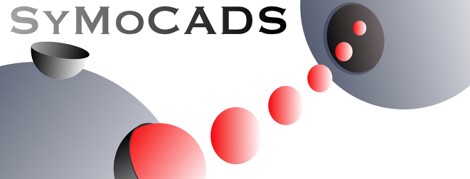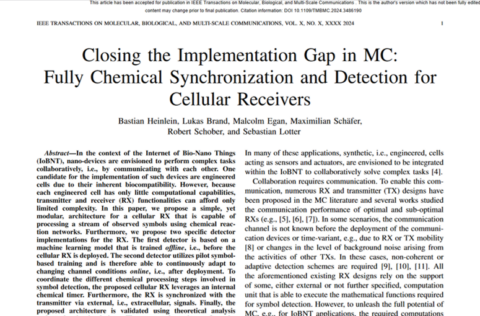New SyMoCADS Paper Accepted
In their latest journal publication, SyMoCADS researchers address the implementation gap in molecular communications (MC), which describes the large discrepancy between theoretical vision and practical implementation in MC. Typically, communication engineers can assume that sufficient compute power is available to reliably implement the algorithms they develop. However, this is usually not the case for nanoscale MC, such as for the communication between genetically engineered cells, as they perform computations chemically. Such chemical computations are noisy and cannot directly implement complex digital functions. To remedy this, Bastian Heinlein, Lukas Brand, Maximilian Schäfer, Robert Schober, and Sebastian Lotter from the Institute for Digital Communications, together with Malcolm Egan from INRIA, Lyon, France, have developed the first model for a fully chemical implementation of receiver functionality including detection, synchronization, and training using pilot symbols.
The paper has been accepted for publication in the IEEE Transactions on Molecular, Biological, and Multi-Scale Communications and is already available as early access publication.

